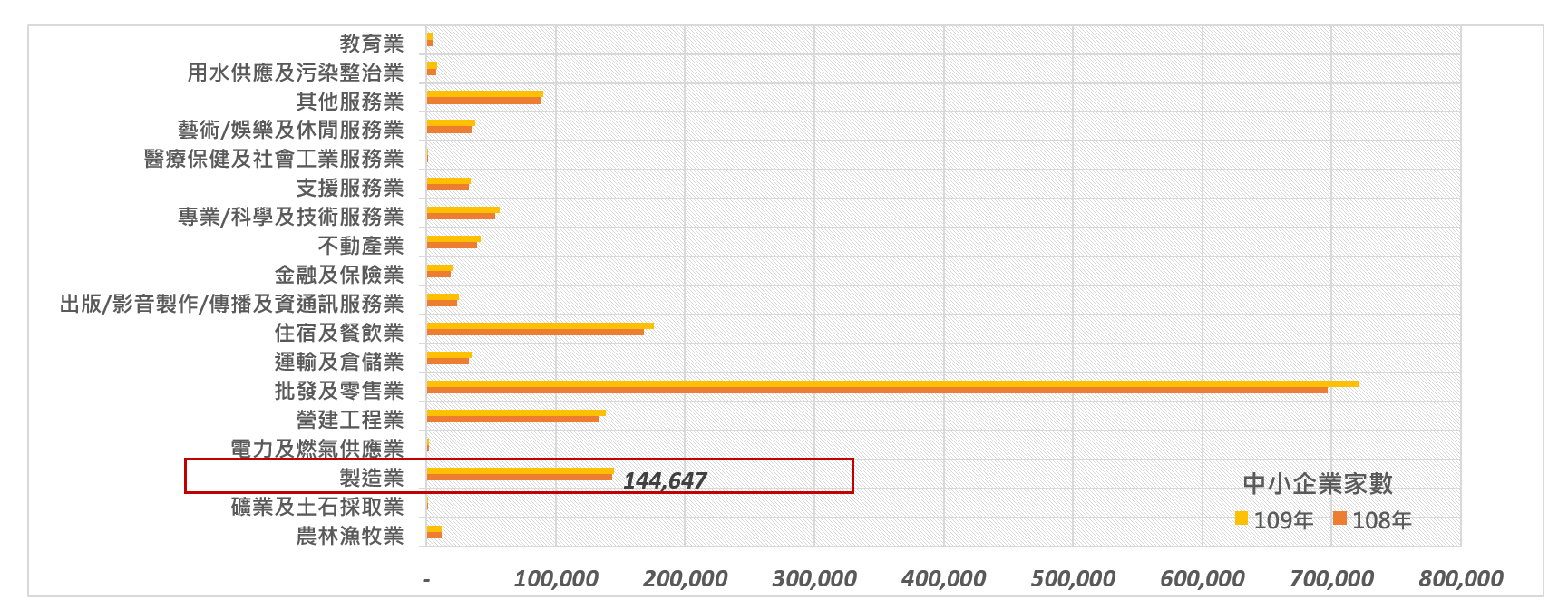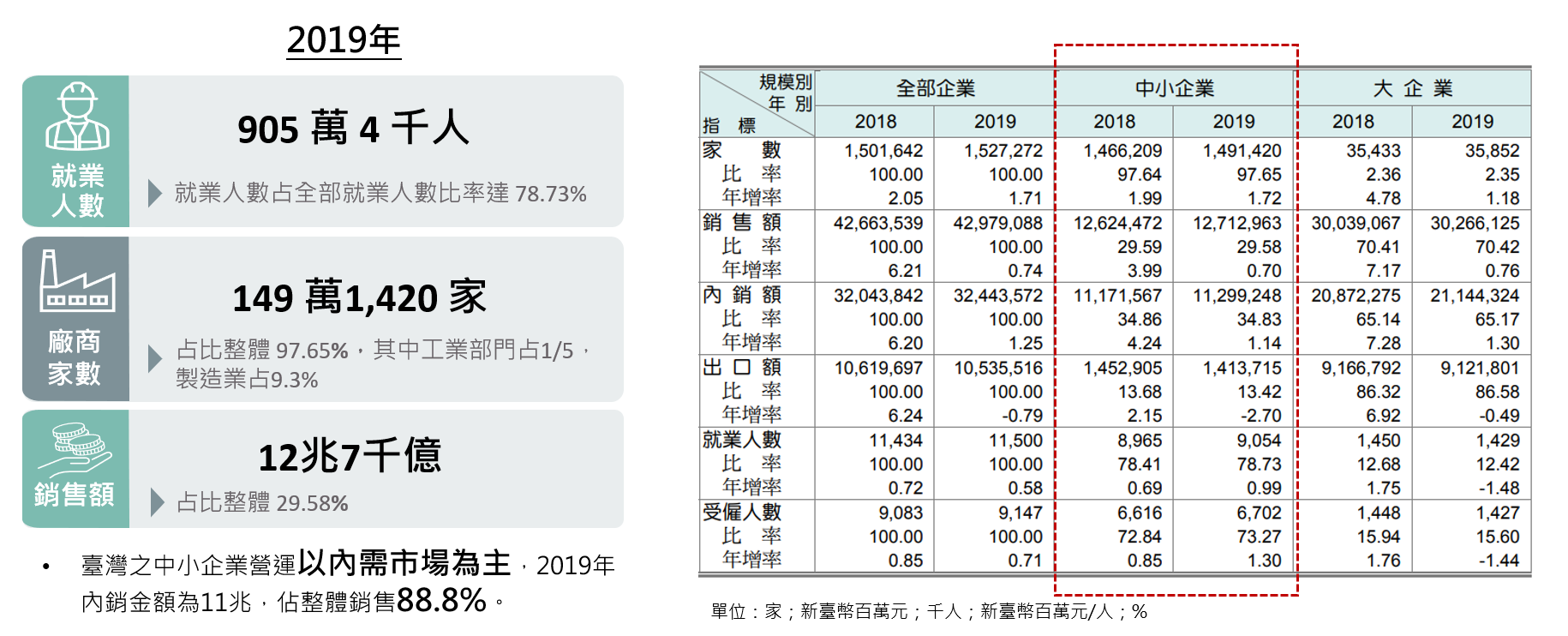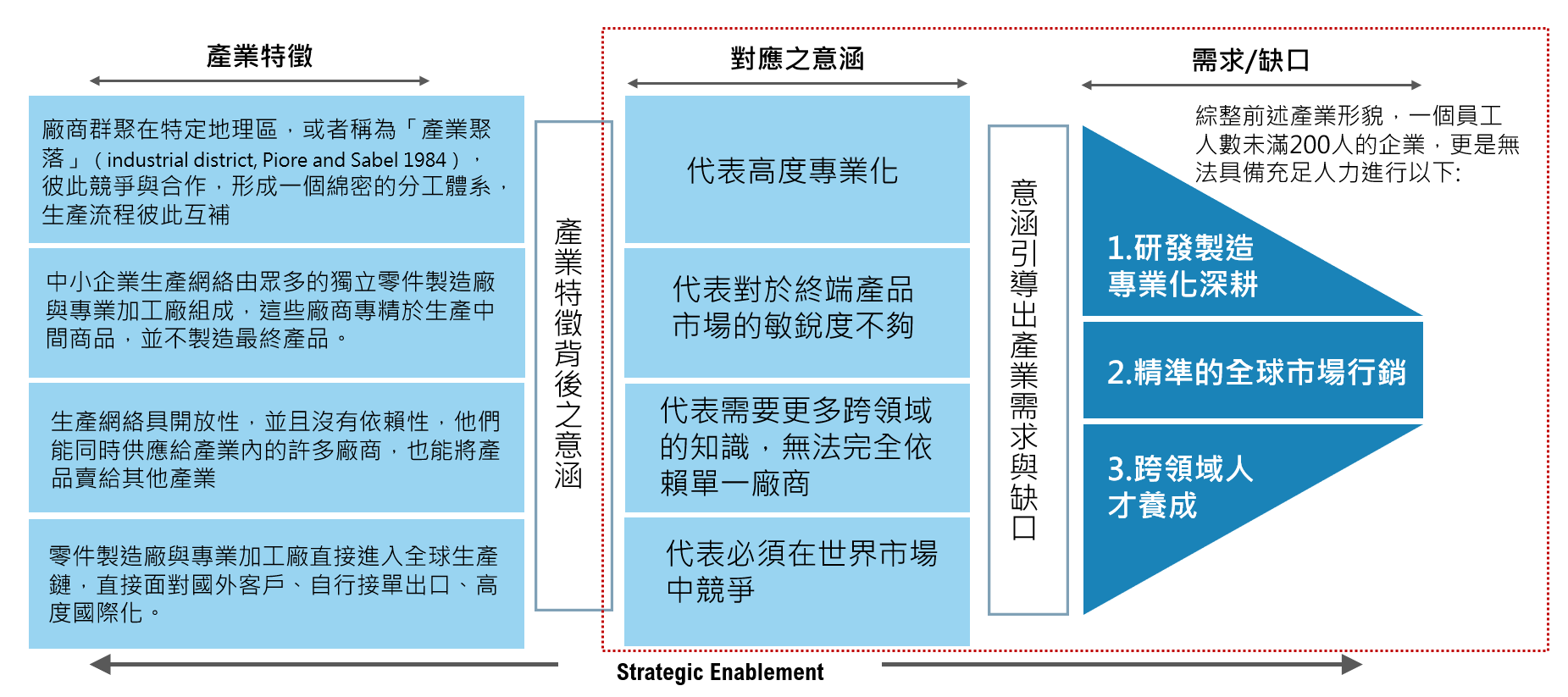Organization Introduction
The Strategic Planning and Promotion Division of the Metal Industry Research and Development Centre was separated from the original Industry Research Division in January 2022, and is composed of a group of professional and enthusiastic industrial researchers. The past research interests include non-praseodymium metal materials (copper, aluminum, titanium, nitinol, stainless steel), offshore wind power and marine engineering, defense and space, circular economy and green energy. In response to the rapid changes in the global industry and the rise of many emerging technologies and industries, the Strategy Division focuses on the research and promotion of emerging industries. In addition to assisting the government in formulating relevant policies and guidelines, we are also committed to assisting the growth of small and medium-sized enterprises (SMEs) in Taiwan, looking forward to playing a role in establishing a platform for value co-creation platform among industry, government, academia, and research to facilitate cross-organizational and cross-disciplinary interactions.
[Core Value]: Provide cross-disciplinary knowledge, formulate R&D and marketing layout strategies, and become an important partner of small and medium-sized enterprises (manufacturing).

Figure 1: Schematic Diagram of the Formation Process of Value Proposition of Strategy Division
Source: The Strategic Planning and Promotion Division of the Metal Industry Research and Development Centre (2022)
01 Provide precise international market positioning strategies
- To assist in identifying the target market
- To identify potential customers within the target market
- To understand customer trends (including technology and marketing strategies)
- To develop precise strategies
02 Provide cross-disciplinary knowledge integration
Within the division:
- Industry research capabilities
- Foundations of strategic management theories
- Data science application skills
Others: Interdisciplinary connections among industry, academia, and research
The value positioning of UE is formed through a process of continuous reflection, iteration, and refinement.
[Vision]: To play the most crucial role as the chief advisor for small and medium-sized enterprises, and become the most authoritative strategic consulting unit for Taiwan's small and medium-sized enterprises (manufacturing).
We select the manufacturing industry of small and medium-sized enterprises as our priority to serve in that small and medium-sized enterprises provide a large number of employment opportunities and are the backbone of the overall economy. Many studies have shown that SMEs lead to more equitable economic growth and are a source of learning and innovation.
- The manufacturing industry remains highly important to the national economy. The worsening wealth gap in the United States over the past three decades is associated "deindustrialization" and "financialization." (Lin and Tomaskovic-Devey 2013)
- In some Western European countries (e.g. Germany) and small countries (e.g. Denmark), it is often found that small and medium-sized enterprises (SMEs) are important drivers within their economies during the process of industrial transformation. In the process of industrial transformation or the so-called transition to a knowledge-based economy, facing competition from Asia, their SMEs not only refrain from withdrawing from manufacturing activities but instead remain actively involved in the production of high-quality and high-value-added products. (Herrigel 2010). In addition, the United States made a lot of efforts to revitalize American Manufacturing during the Obama administration, such as establishing various small and medium-sized enterprise innovation and entrepreneurship platforms, or providing various incentives and favorable policies(Block and Keller 2011).
Because of this,
(1) We must still pay a lot of attention to small and medium-sized enterprises
(2) When talking about industrial transformation in a knowledge-intensive economy, manufacturing cannot be ignored. At present, there are 18 types of SMEs, and the number of SME manufacturing enterprises in 2020 was 144,647, accounting for about 9.3% of all SMEs (as shown in Figure 2).

Figure 2: Distribution of the Number of Small and Medium-sized Enterprises in 2019-2020
Source: White Paper on 2020 Small and Medium-sized Enterprises
The basic industrial landscape of the SMEs is shown in Figure 3. In 2019, there were 1.49 million manufacturers in Taiwan, accounting for 97.65% of the whole. In other words, currently, small and medium-sized enterprises (SMEs) form the backbone of Taiwan’s economy, constituting the majority. Most of the small and medium-sized enterprises are mainly in the domestic demand market, and the domestic sales amount in 2019 reached 11 trillion yuan, accounting for 88.8% of the overall sales. However, a common challenge for small and medium-sized enterprises is that inadequate resources and limited grasp of the international market often restricts their production capacity and order income, making it difficult for them to achieve significant growth.

Figure 3: The Industrial Landscape of Small and Medium-sized Enterprises in Taiwan
Source: White Paper on 2020 Small and Medium-sized Enterprises
The operation of small and medium-sized enterprises (SMEs) in Taiwan mainly relies on the domestic market. In 2019, the domestic sales revenue amounted to 11 trillion, accounting for 88.8% of the overall sales.
In other words, the characteristics and structure of SMEs will have a significant impact on the needs and gaps of their industries (Figure 4), and this Strategic Planning and Promotion Division aims to leverage its expertise and skills to assist in addressing the needs and gaps of small and medium-sized enterprises. Currently, the division collaborates and assists various industries, including food machinery industry, metal materials industry, machine tool industry, electronic components industry, etc., and hopes to continue to work with academia and industry in the future to expand the scope of services.

Figure 4:Characteristics and Structure, Needs and Gaps of Small and Medium-sized Enterprises in Taiwan
Source: The Strategic Planning and Promotion Division of the Metal Industry Research and Development Centre (2022)
The main services of the Strategic Planning and Promotion Division:
- To assist the government to observe the domestic and international situations to formulate relevant layout and promotion strategies
- To assist the government to shape the emerging industry ecosystem
- To provide relevant strategic planning services required by industries and enterprises
- To provide digital precision marketing and layout strategy services for enterprises
From the perspective of industrial issues, there are currently six emerging industry issues: (1) Smart technology (2) net zero emissions (3) green technology (4) marine industry (5) space industry (6) defense industry. We provide a complete service of identifying trends, observing the current situation, formulating strategies, and chain industries.